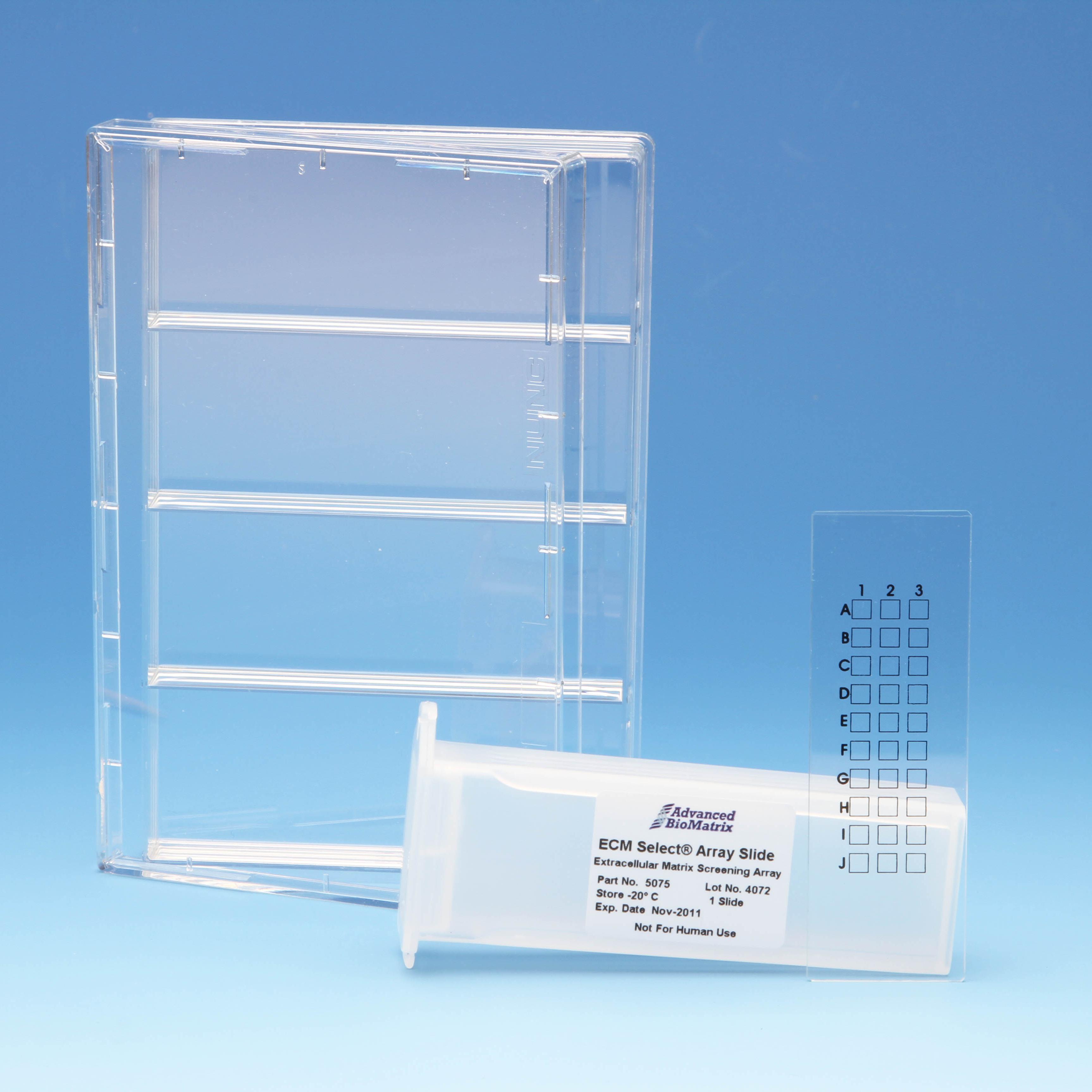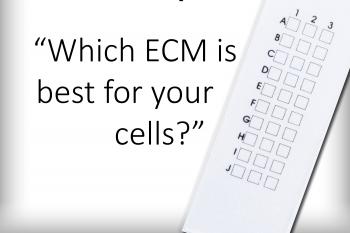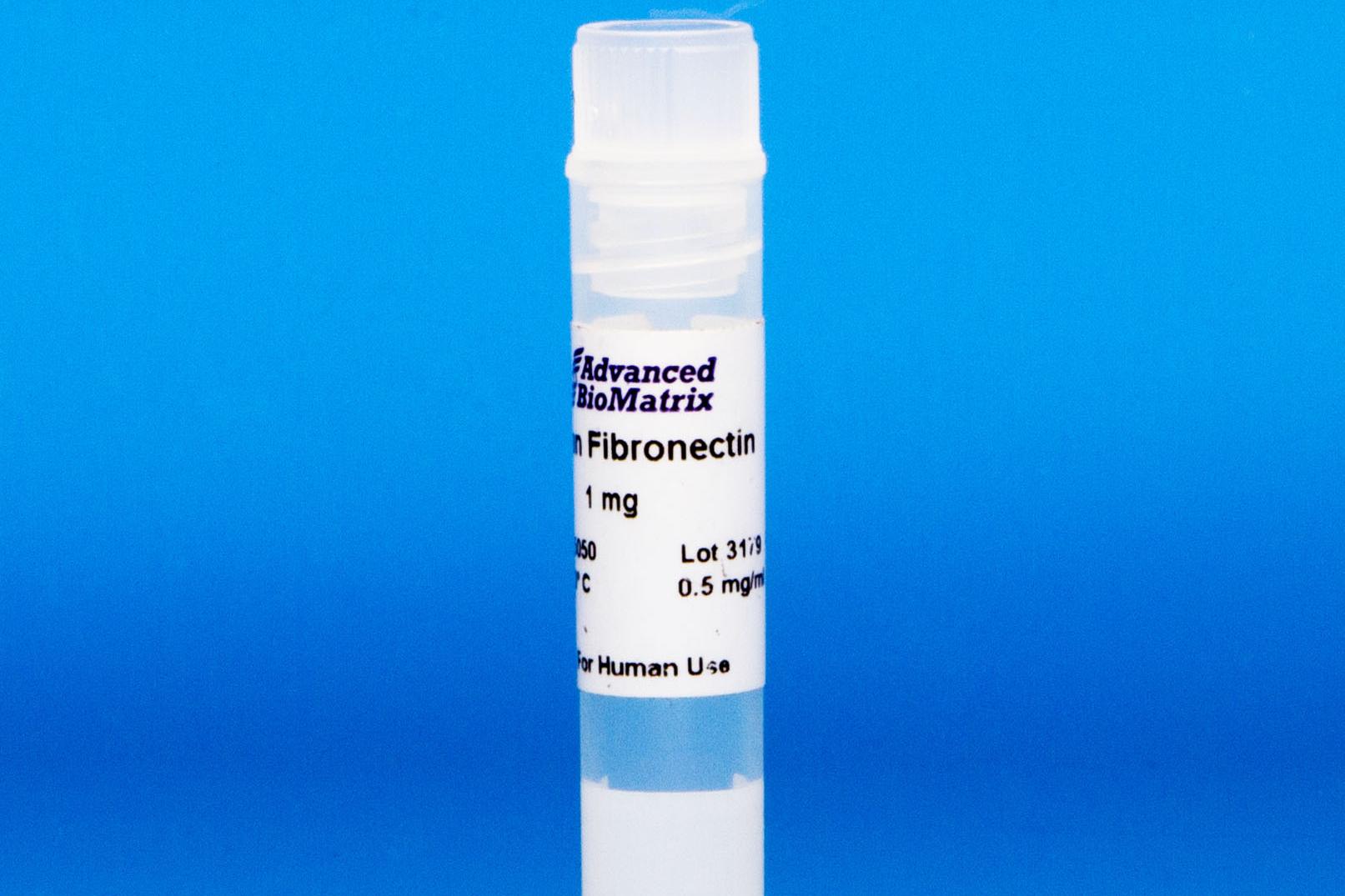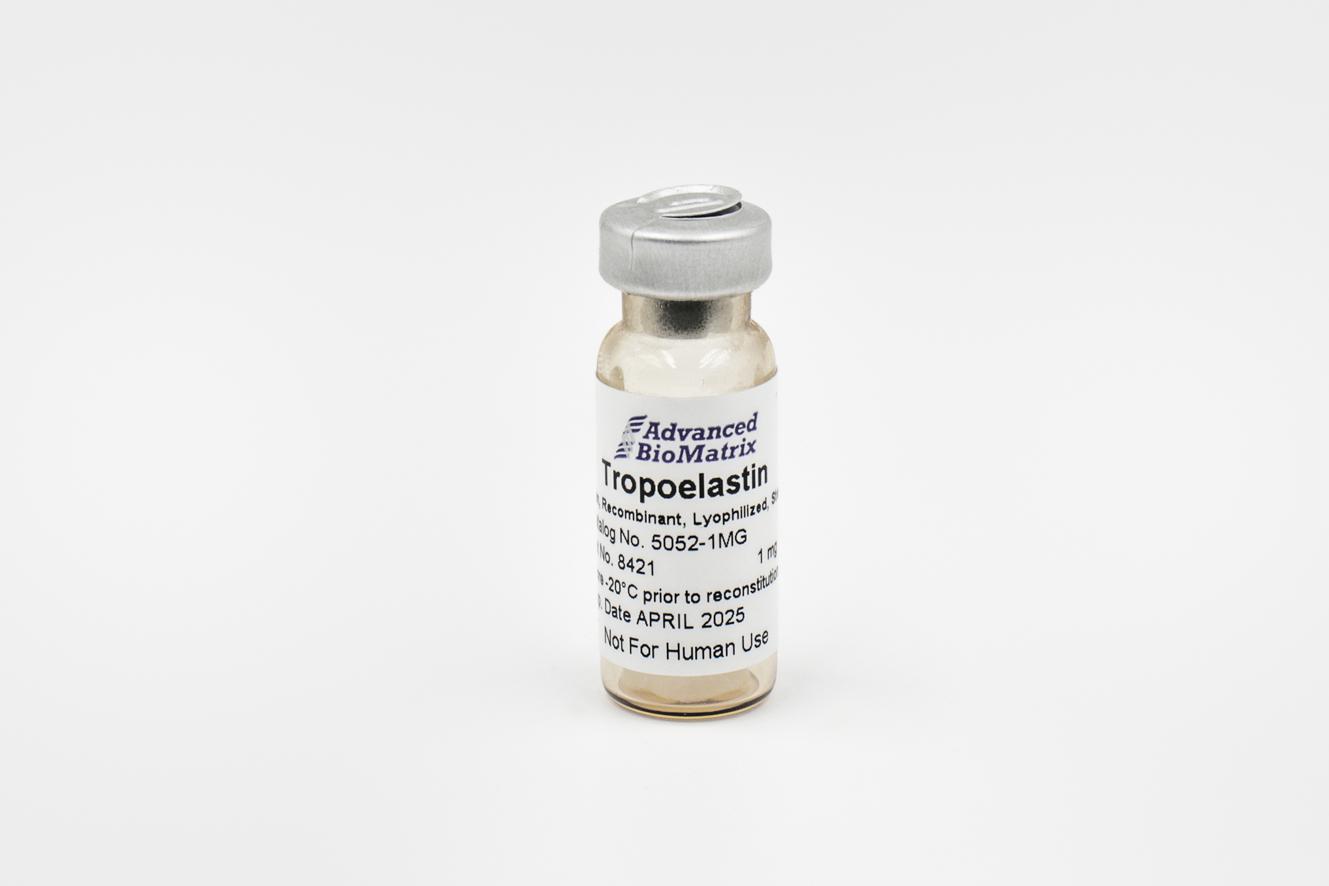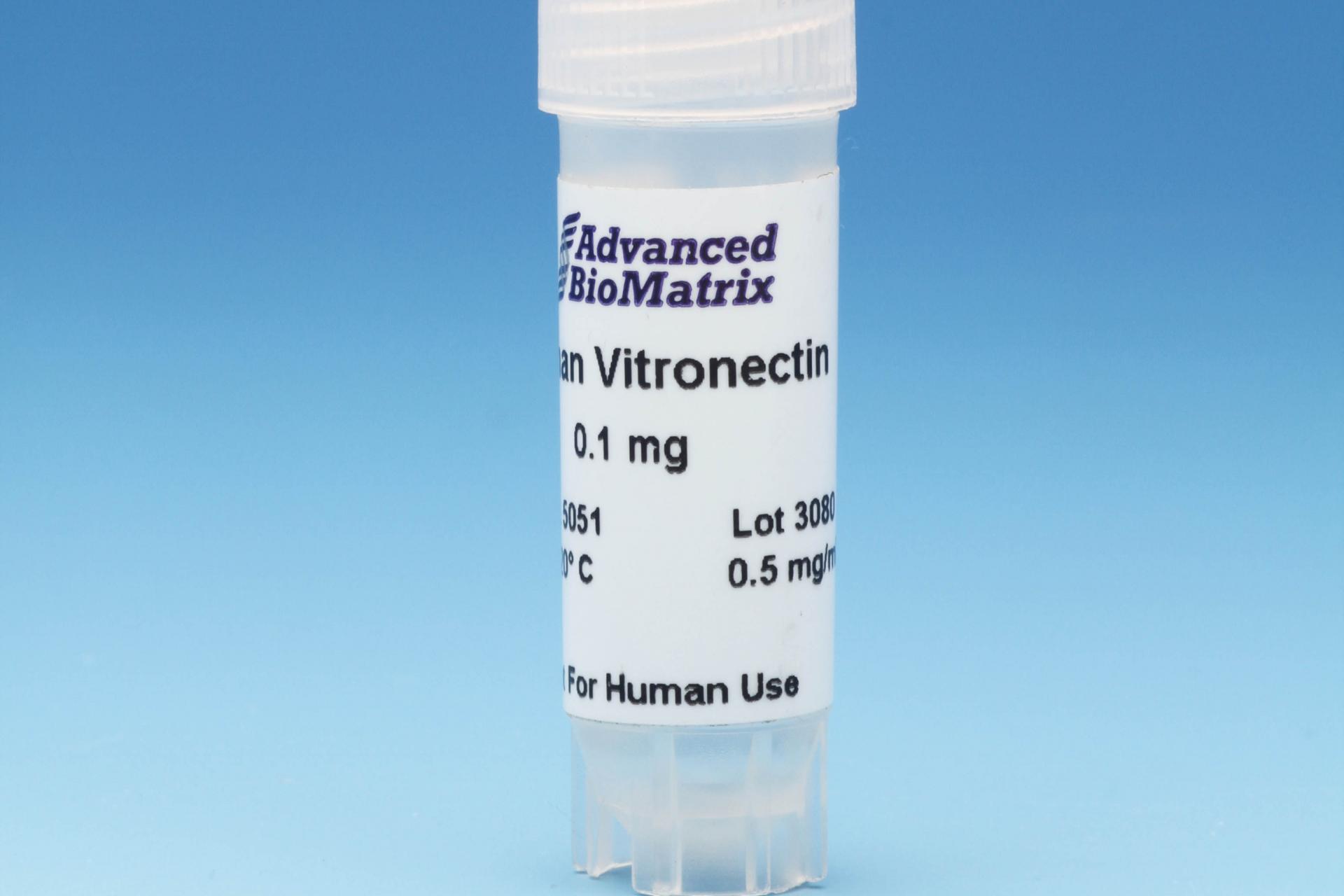-
Collagen
-
Type I - Atelocollagen
- PureCol® Solution, 3 mg/ml (bovine) #5005
- Nutragen® Solution, 6 mg/ml (bovine) #5010
- FibriCol® Solution, 10 mg/ml (bovine) #5133
- PureCol® EZ Gel, Solution, 5 mg/ml (bovine) #5074
- PureCol® Lyophilized, 15 mg (bovine) #5006
- VitroCol® Solution, 3 mg/ml (human) #5007
- VitroCol® Lyophilized, 15 mg (human) #5008
-
Type I - Telocollagen
- TeloCol®-3 Solution, 3 mg/ml (bovine) #5026
- TeloCol®-6 Solution, 6 mg/ml (bovine) #5225
- TeloCol®-10 Solution, 10 mg/ml (bovine) #5226
- RatCol™ for 2D and 3D, Solution, 4 mg/ml (rat) #5153
- RatCol™ High Concentration, Solution, 10 mg/ml (rat)
- RatCol™ lyophilized, 100 mg (rat)
- RatCol™ for Coatings, Solution, 4 mg/ml (rat) #5056
- Type I - Insoluble Collagen
- Type I - Bioinks
- Type II Collagen
- Type III Collagen
- Type IV Collagen
- Collagen Standard
-
PureCol® Collagen Coated Plates
- Collagen Coated T-25 Flasks #5029
- Collagen Coated 6-well Plates #5073
- Collagen Coated 12-well Plates #5439
- Collagen Coated 24-well Plates #5440
- Collagen Coated 48-well Plates #5181
- Collagen Coated 96-well Plates #5072
- Collagen Coated 384-well Plates #5380-5EA
- Collagen Coated 100 x 20 mm Dishes #5028
- MatTek Glass-Bottom Dishes
- MatTek Multi-Well Plates
- Collagen Scaffolds
- Collagen Hybridizing Peptides
-
Type I - Atelocollagen
- Tunable Stiffness
- CytoSoft™ Rigidity Plates
-
Bioprinting
- Support Slurry for FRESH Bioprinting
-
Bioinks for Extrusion Bioprinting
- Lifeink® 200 Collagen Bioink (35 mg/ml) #5278
- Lifeink® 220 Collagen Bioink (70 mg/ml) #5343
- Lifeink® 240 Acidic Collagen Bioink (35 mg/ml) #5267
- Lifeink® 260 Acidic Collagen Bioink (70 mg/ml) #5358
- GelMA Bioink
- GelMA A Bioink
- GelMA C Bioink
- Pluronic F-127 40% Sterile Solution
- GelMA 20% Sterile Solution
- Alginate 5% Sterile Solution
- Photoinitiators
- Bioinks for BIONOVA X
- Bioinks for Lumen X
- DLP Printing Consumables
-
Create Your Own Bioinks
- PhotoCol® Methacrylated Collagen
- PhotoGel® Methacrylated Gelatin 95% DS
- PhotoGel® Methacrylated Gelatin 50% DS
- PhotoHA®-Stiff Methacrylated Hyaluronic Acid
- PhotoHA®-Soft Methacrylated Hyaluronic Acid
- PhotoAlginate® Methacrylated Alginate
- PhotoDextran® Methacrylated Dextran
- PEGDA (Various Molecular Weights)
- Silk Fibroin, Solution
- PhotoSericin® Methacrylated Sericin
- Bioprinters
-
3D Hydrogels
- Thermoreversible Hydrogel
- Silk Fibroin
-
Type I Collagen for 3D Hydrogels
- PureCol® Solution, 3 mg/ml (bovine) #5005
- Nutragen® Solution, 6 mg/ml (bovine) #5010
- FibriCol® Solution, 10 mg/ml (bovine) #5133
- PureCol® EZ Gel, Solution, 5 mg/ml (bovine) #5074
- VitroCol® Solution, 3 mg/ml (human) #5007
- TeloCol®-3 Solution, 3 mg/ml (bovine) #5026
- TeloCol®-6 Solution, 6 mg/ml (bovine) #5225
- TeloCol®-10 Solution, 10 mg/ml (bovine) #5226
- RatCol® for 3D gels, Solution, 4 mg/ml (rat) #5153
- HyStem® Thiolated Hyaluronic Acid
- Methacrylated Collagen
- Methacrylated Gelatin
- Methacrylated Hyaluronic Acid
- Diacrylates
- Collagen Sponges
- Methacrylated Polysaccharides
- Spheroids and Organoids
- Extracellular Matrices
- HyStem / Hyaluronic Acid
-
Adhesion Peptides / Proteins
-
Recombinant Adhesion Proteins
- CD2, 0.5 mg/ml #5086
- CDH3, 0.5 mg/ml #5124
- CDH13, 0.5 mg/ml #5125
- CD14, 0.5 mg/ml #5089
- CDH18, 0.5 mg/ml #5090
- CD40, 0.5 mg/ml #5093
- CD86, 0.5 mg/ml #5096
- CD164, 0.5 mg/ml #5100
- CD270, 0.5 mg/ml #5127
- CD274, 0.5 mg/ml #5126
- CD276, 0.5 mg/ml #5123
- E-Cadherin (CD324), 0.5 mg/ml #5085
- ICAM2, 0.5 mg/ml #5107
- Adhesion Peptides
- Collagen Hybridizing Peptides
-
Recombinant Adhesion Proteins
- Reagents
- Assays
ECM Select™ Array Kit Ultra-36
ECM Protein Screening Array
Catalog #5170
ECM Select™ Array Kit Ultra-36
ECM Protein Screening Array
Catalog #5170
ECM Select™ Array Kit Ultra-36 is an overnight extracellular matrix screening array which helps you find the best extracellular matrix (ECM) protein for your cells. This product has 36 human ECM conditions that are each printed as 9 replicate spots (400 µm diameter) onto the hydrogel surface.
Product Description
ECM Select™ Array Kit Ultra-36 is an overnight extracellular matrix screening array. This product has thirty six (36) human extracellular matrix protein (ECM) conditions that are deposited onto the hydrogel surface as printed array spots. Each ECM condition is printed with nine (9) replicate spots where each spot has diameter of 200-400 µm. The ECMs are localized within each spot without cross diffusion from neighboring spots, therefore each spot represents an independent ‘well’ or experiment.The slide is intended for evaluation of initial attachment (<24 hours). Long term culture may cause the spots to separate or the polyacrylamide coating to detach.
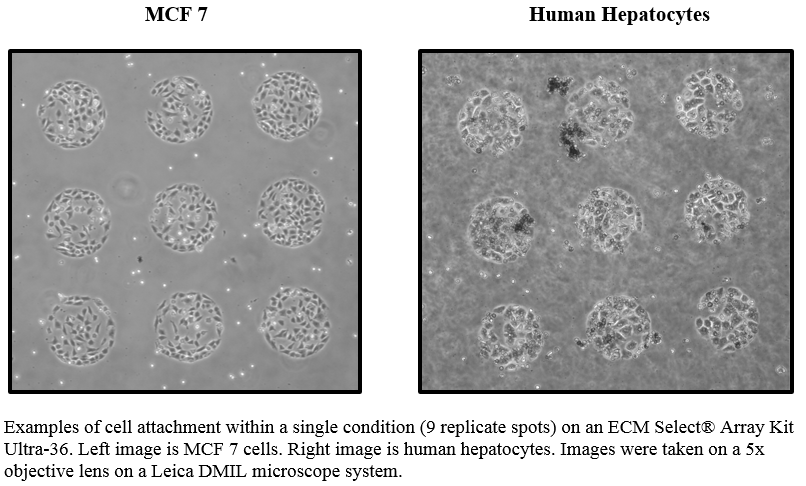
The ECM Select™ Array Kit Ultra-36 contains a microscope glass slide printed with the ECM conditions contained within a protective slide holder and a pre-sterilized tray. The components are sterilized and ready-to-use.
Cells of interest are seeded on to the ECM Select™ Array slide and allowed to be cultured in the incubator for the desired amount of time. Cell morphology, attachment and growth can be visualized using a bright field microscope. Specific cellular behaviors can be monitored by staining the cells on the slide using specific fluorescence based marker. Fluorescence signal can be detected using fluorescence microscope imaging system.
The ECM Select™ Array Kit Ultra-36 is simple to use in comparison to performing the same experiment in multi-well tissue culture plates. Cell seeding, fixing, washing and process steps are done in one single solution exchange, eliminating multi-well solution handlings. From start to finish, the optimal ECM for culturing cells can be determined in less than 24 hours for most cell types.
Directions for Use
Download the Full Directions for Use PDF
Note - The DFU contains a statement about Mounting Media. Please see additional information in the Q&A tab above.
Product Q & A
Because it is contact printing, it is hard to determine the the precise amount. Based on protein staining result, each spot is about 0.1-1ng.
There may be possibility of antagonist effect of two different component. We have not seen this very often, what we usually see is one of the component by itself does not provide adhesion effect, but when combine with another ECM, greatly enhance the other ECM.
The stiffness is ~10 kPa.
Mounting media tends to destroy the polyacrylamide hydrogel that the ECM spots are printed onto.
There are two options:
Option 1: Incubate the entire slide for 20 minutes with 4% PFA prior to the stain protocol. The slide was cover-slipped with a 90% glycerol medium containing the PPD anti-fade compound and sealed with fingernail polish around the edges.
Option 2: Fluoromount Aqueous Mounting Media (Sigma F4680-25ML) has worked for some customers in their labs but we have not tested this in-house.
Advanced BioMatrix manufacturers a majority of the proteins on the slide. Here is the full list of sources:
| Collagen 1 | Advanced BioMatrix #5007 |
| Collagen III | Advanced BioMatrix #5019 |
| Collagen IV | Advanced BioMatrix #5016 |
| Collagen V | Advanced BioMatrix #5168 |
| Collagen VI | Corning #354261 |
| Fibronectin | Advanced BioMatrix #5050 |
| Vitronectin | Advanced BioMatrix #5051 |
| Tropoelastin | Advanced BioMatrix #5052 |
| Laminin | Sigma #L6274 |
After drying, the slide is stable for a long time. However the fluorescence signal may not last very long. In order to avoid photo bleaching, store the slide in the dark.
Product References
References for ECM Select®:
Shaheen, Noel L., et al. "Extracellular matrix composition modulates angiosarcoma cell attachment and proliferation." Oncoscience11-12 (2017): 178.
Ferreira, L. P., V. M. Gaspar, and J. F. Mano. "Design of Spherically Structured 3D In vitro Tumor Models-Advances and Prospects." Acta biomaterialia(2018).
Product Certificate of Analysis
No result for .
Product Videos
Product Disclaimer
This product is for R&D use only and is not intended for human or other uses. Please consult the Material Safety Data Sheet for information regarding hazards and safe handling practices.
